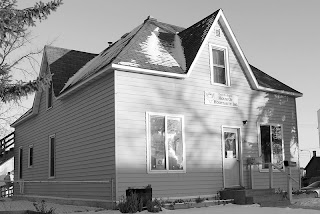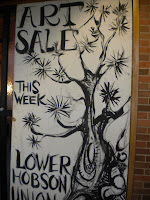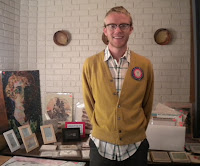The Giving Tree Puts Joy In the Hearts of Many This Holiday Season
Keeping the Meaning of Christmas Alive
By Tara Hjermstad
When Christmas is brought up, often time’s thoughts of mistletoe and gifts come to mind. But for many in the Bemidji area, Christmas this year isn’t a jolly thought.
Homelessness is a problem in Beltrami County, along with other issues that would bring a child or family to be without money during the holiday season to buy gifts.
Jennifer Bamberger, the Programming Assistant in Hobson Memorial Union, has always had her heart set on what’s best for others and thinking of new ways that she can make a positive change in someone’s life. Although she does not work directly with the Village of Hope, she wanted to have something that the “students, faculty and staff could do.”
She contacted Cathy Brook, Child Protection Intake Social Worker for Beltrami County Social Services, to see if there were any families in need this holiday season and how BSU could help.
Turns out, there is a great number of homelessness in the Bemidji area right now, and Brook was thrilled to have Bamberger assisting in giving. Many of the families that Brook is working with have just lost their homes and are in deep financial troubles, so gift giving is not a priority that they can fulfill right now.
There are also many children that have lost both of their parents for whatever the reason may be, and have been placed in foster care with no money coming in for gifts for giving or receiving. Both Brook and Bamberg believe that during the holidays, just simply knowing that someone thought about these children to buy them a gift and share their holiday with them, is enough to make the children happy.
Because of budget cuts and lack of funding, Brook’s program is not able to reach every family in need, but thanks to BSU’s programs, such as the Giving Tree, “answering the parents and children’s prayers” has been made possible. Brook brought an idea up to Bamberger about a book she had read and thought would be a wonderful idea for the Bemidji community.
According to Brook, the Giving Tree is a children’s book published in 1964 by Harper & Row, written and illustrated by Shel Silverstein, and has now become published in over 30 different languages. It is basically about a young boy’s relationship with a tree that gives him everything the boy asks for, eventually sacrificing his entire self for the young boy’s happiness. It was only fitting that the tree in the Upper Hobson Union be named after this incredible story.
Bamberger, along with two helpers, Andrea and Destiny, also in the Hobson Memorial Union, have put together what they have named, the “Giving Tree.”
“I wanted to help children who might not have a merry Christmas this year and could use a secret angel to help make their season bright.” The children’s names were added to angel ornaments on the Christmas tree near the information desk, while Bamberger sent out a mass email to all BSU students, challenging each one to “adopt” a child in need to “make them smile on Christmas morning” this holiday season.
The Giving Tree is a tree set up in the Upper Hobson Union that has 30 angels placed on it. Each angel has the gender and age of a child in need. Whichever angel is taken, that person is responsible to buy a gift for that child.
It is in place this holiday season to reach out to those less fortunate and give from the heart, said Bamberger. “Children should have a special moment in their lives when they can look back and say remember when...”
There is no price range to the gift, nor are there a maximum number of gifts that can be given. There is no amount too many for how many angels taken either. Bamberger encourages people to take more than one angel if there is a group of people going in together to “provide gifts for these less fortunate children.”
Currently, the Giving Tree is bare of angels, but there are more on the way. Brook has been contacted to send more angels to fill the tree again. Bamberger received this note from Brook along with the first load of angels giving thanks to the HMU and BSU students and families for their support:
“I just want to say thank you in advance for opening your hearts to the children and families that we serve. Many of the children listed below are currently in and out of home placement and won’t be with their families this holiday season. Some are homeless that we have placed in foster homes so they have a warm place to spend the holidays, and some are just down on their luck and need a helping hand. Since their names cannot be shared, I want to extend a thank you on their behalf.”
Each gift bought must be brought back to the Upper Hobson Union before the start of Christmas vacation, unwrapped and ready to go to the child.
Again, there is no limit to the amount of money spent or the number of gifts bought, as long as the thoughts going out to these families in need is there, that makes it all worth it.
The salvation army is also making duffel bags filled with the necessities, toiletries, toys, stuffed animals and blankets. Many of these bags are given to the local police stations, because usually they are the first ones to the scene when a child is to be removed from a home or in need.
Any other information on donations to be given past the deadline of the Giving Tree can be brought up to Cathy Brook or Jennifer Bamberger.
Remember, this holiday season is about giving. Let’s keep the meaning behind it, and make sure that we have a healthy, happy community, because everyone deserves to feel joy and thankfulness anytime of the year.





















